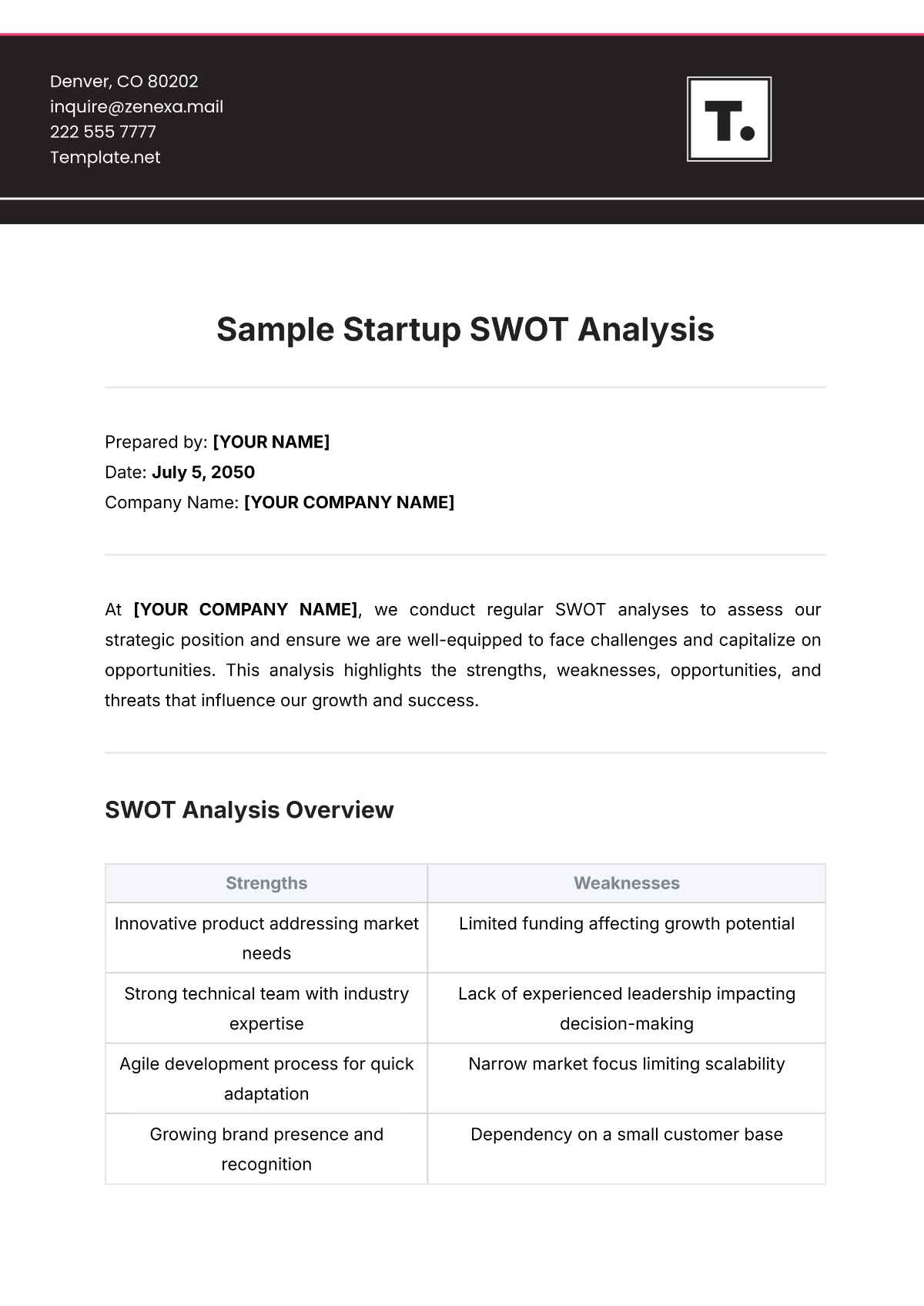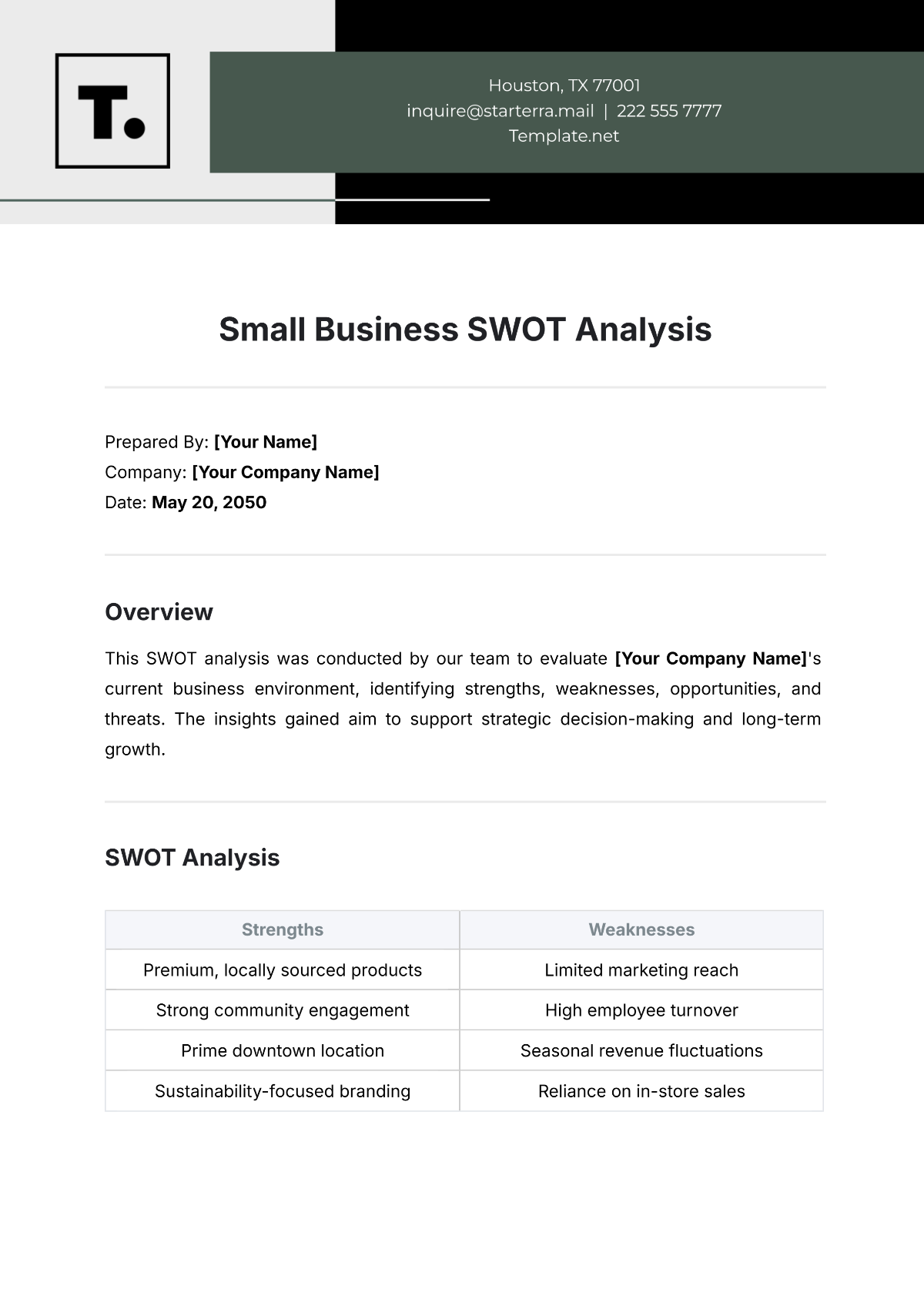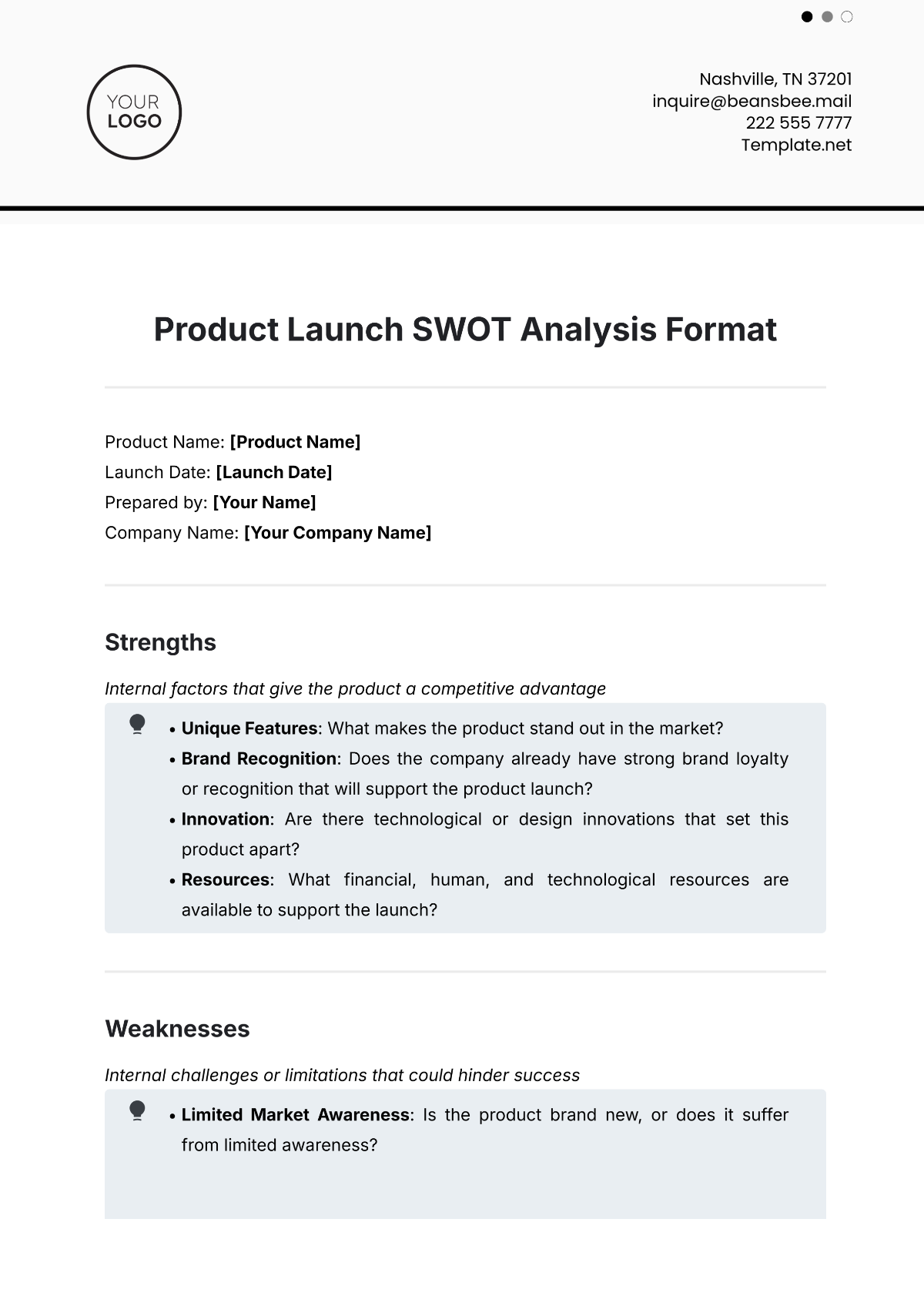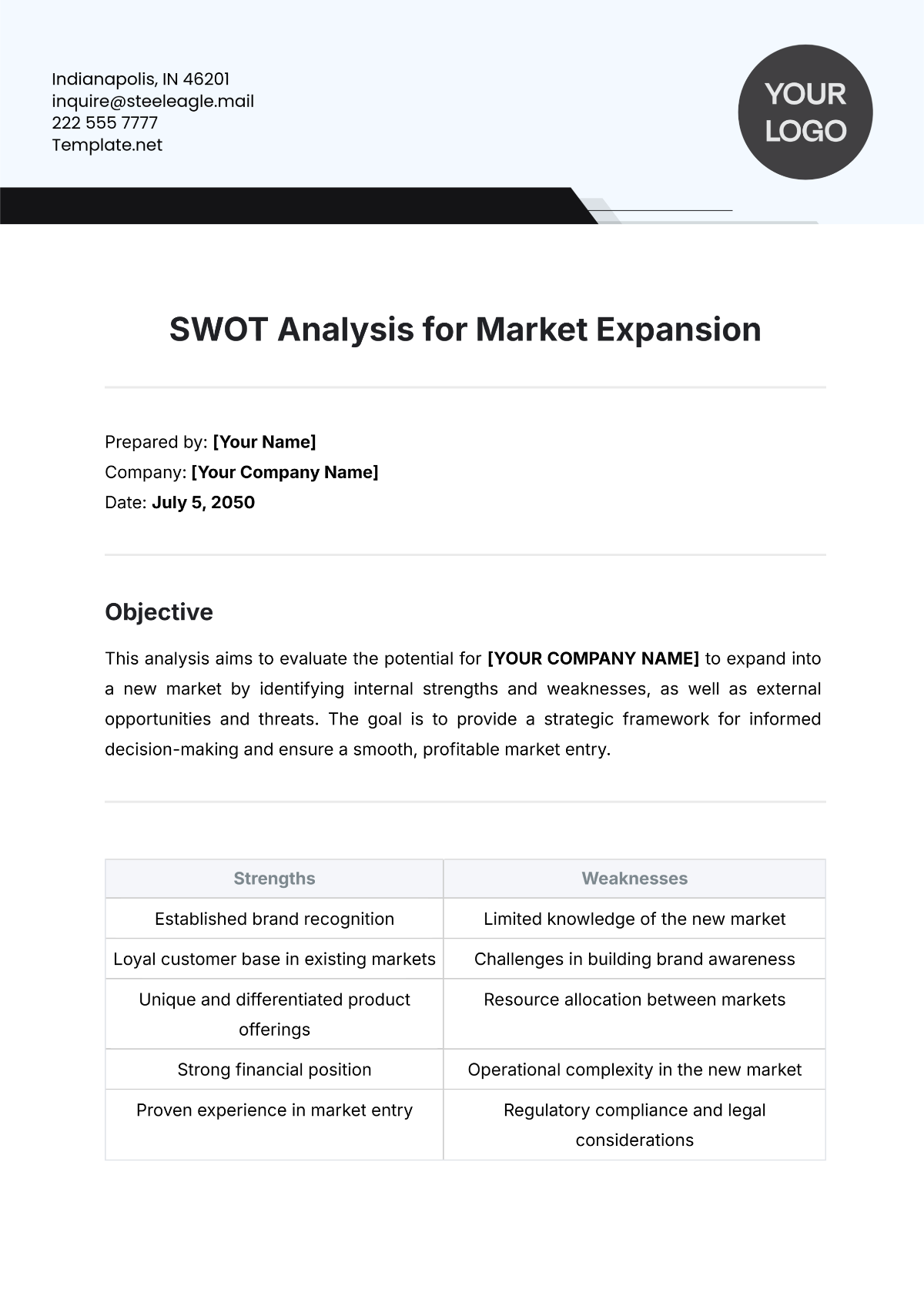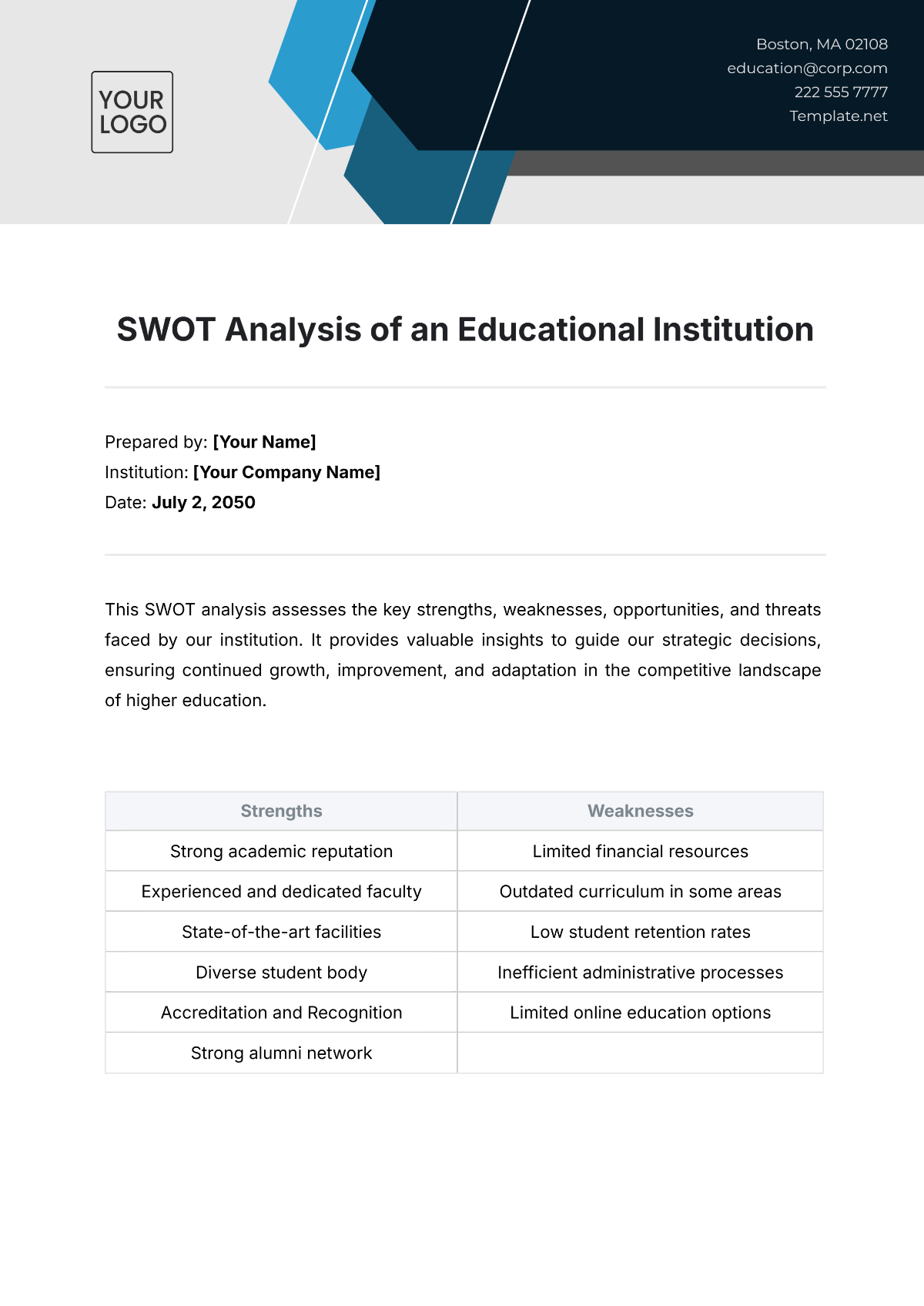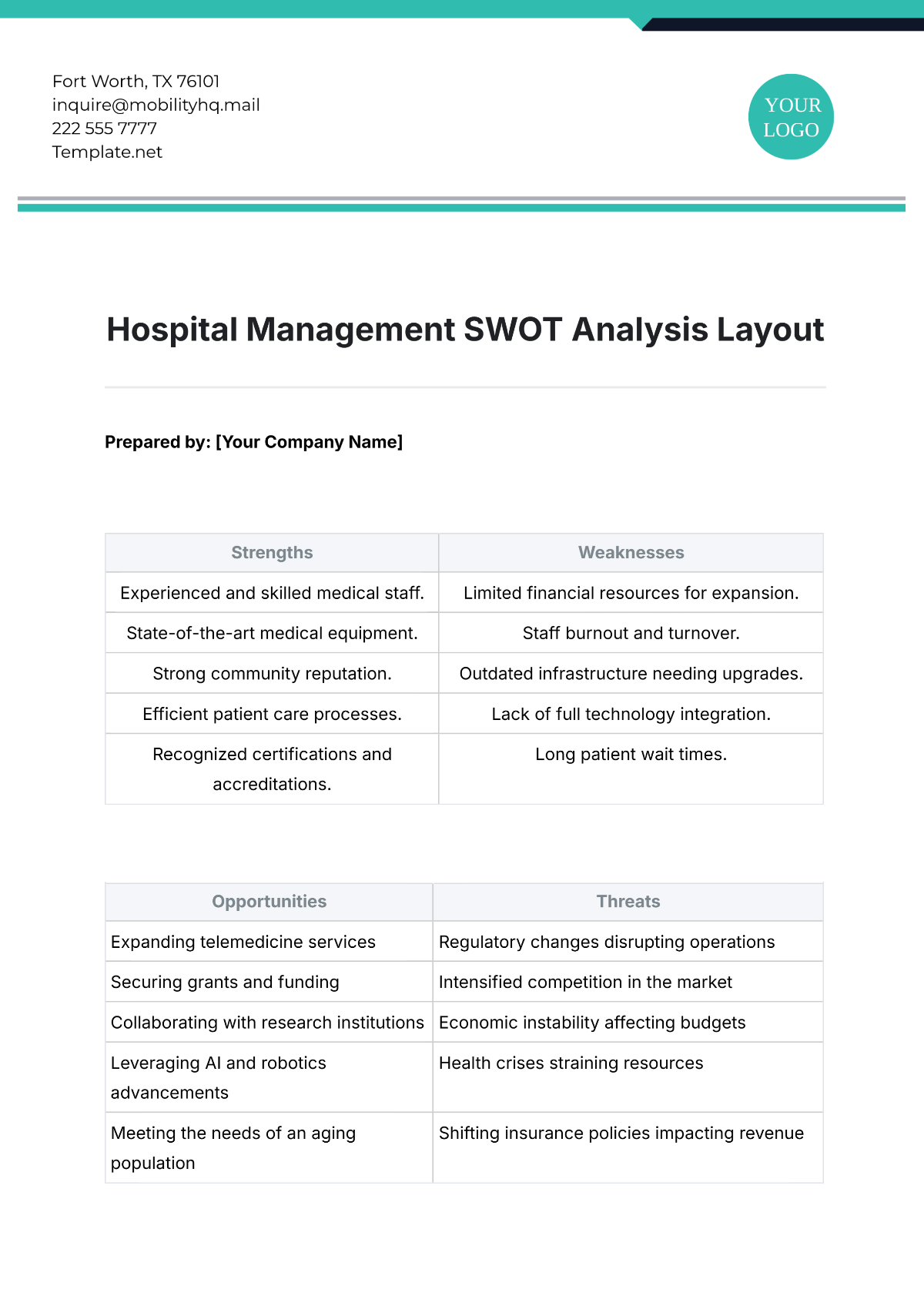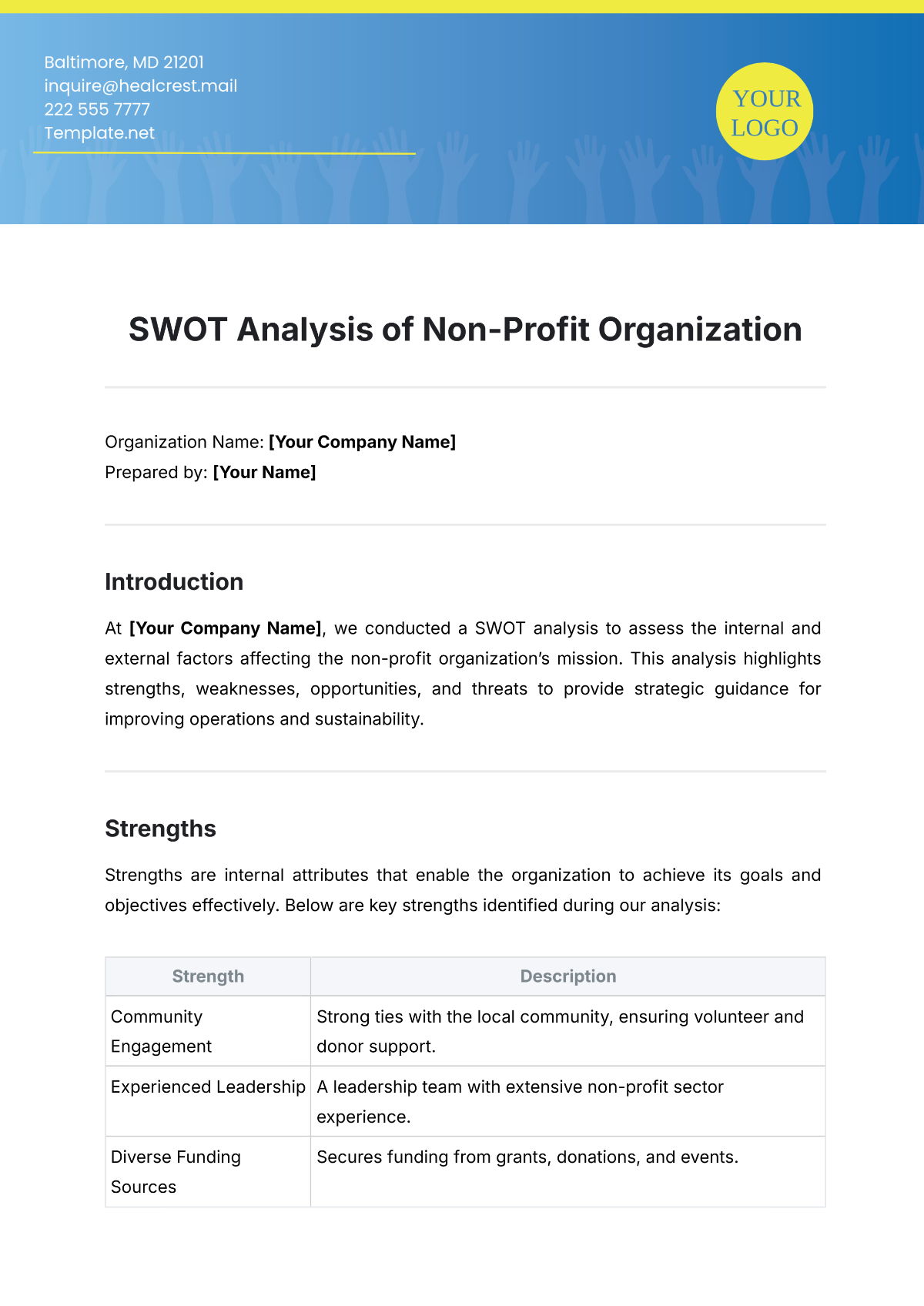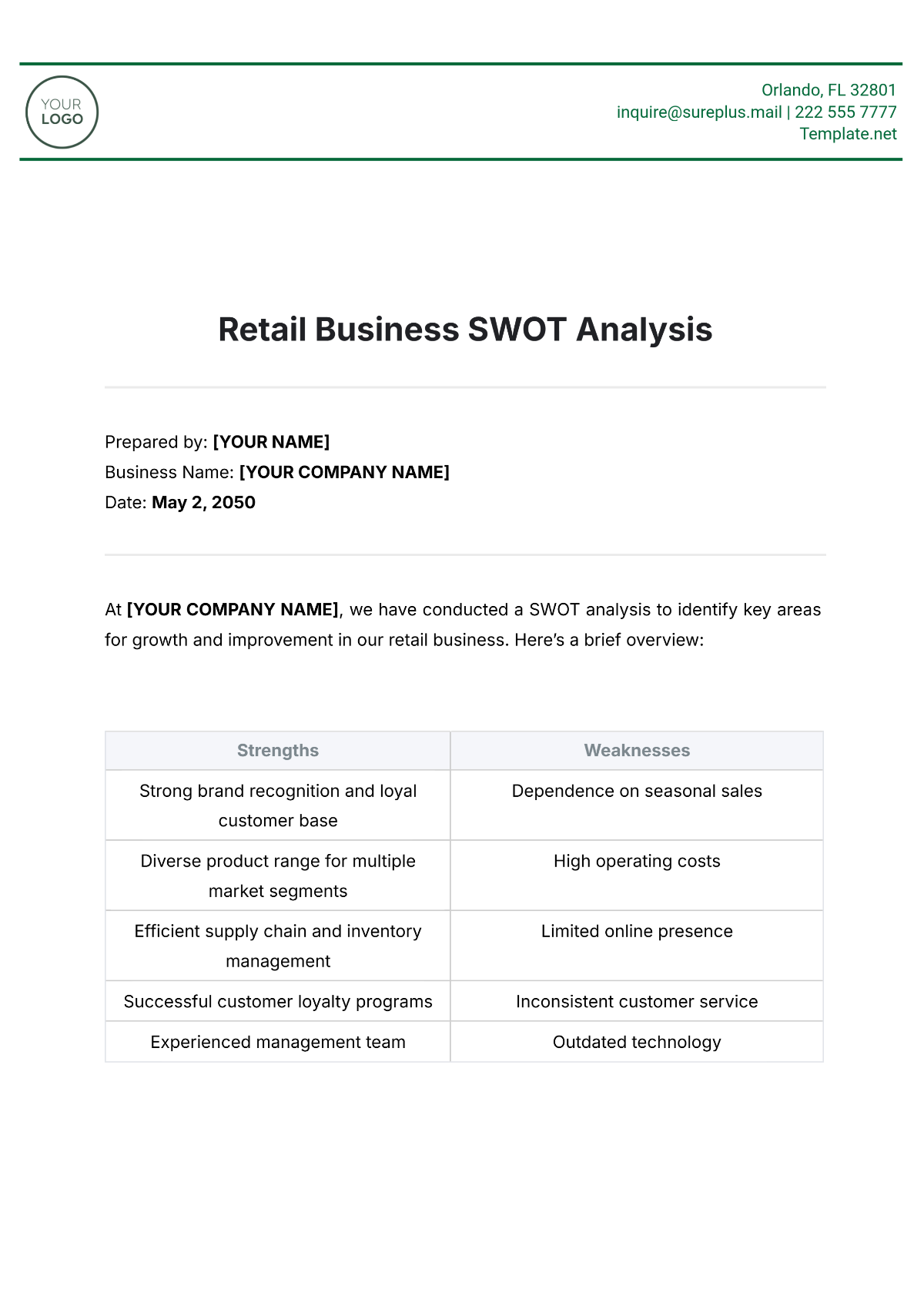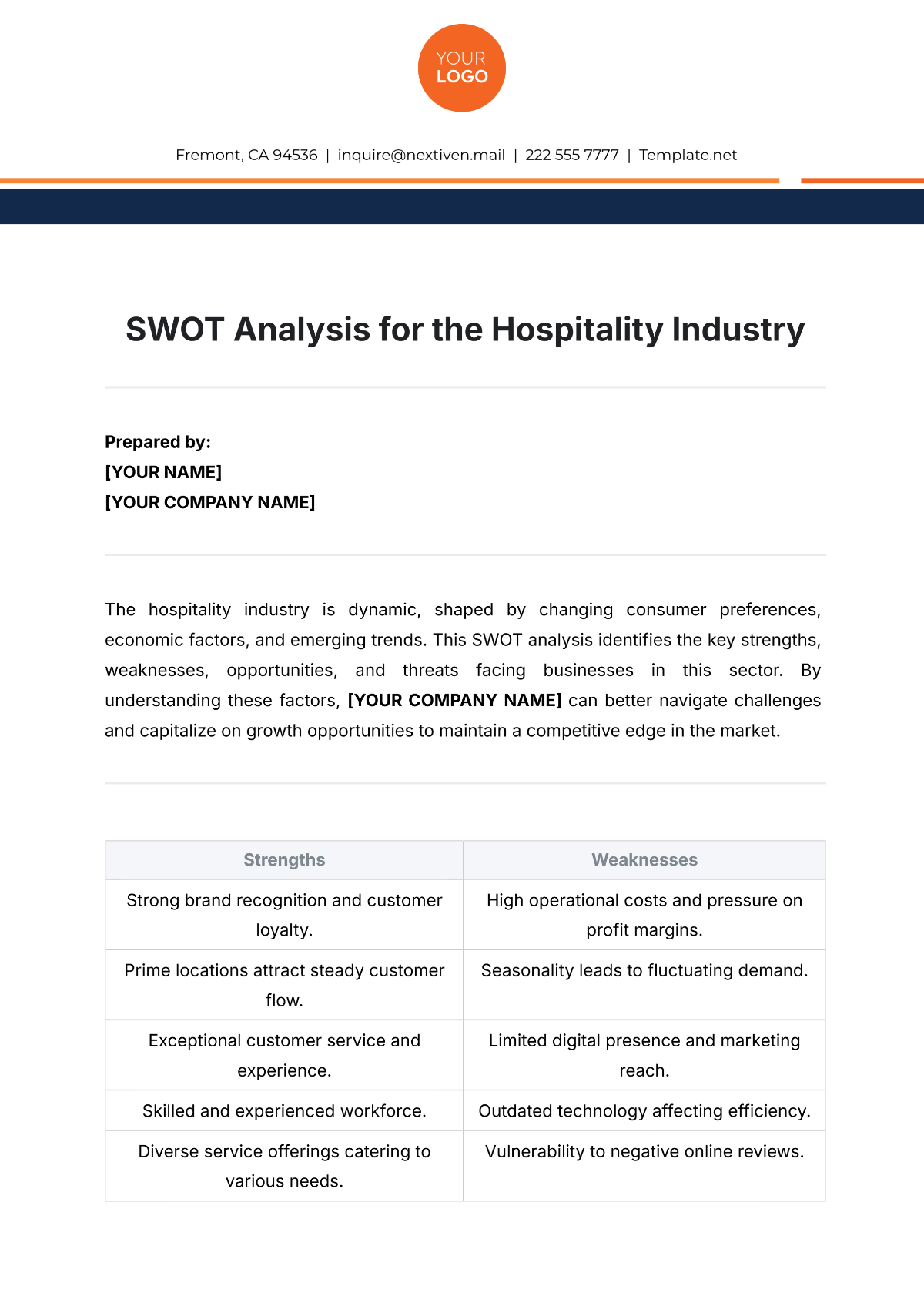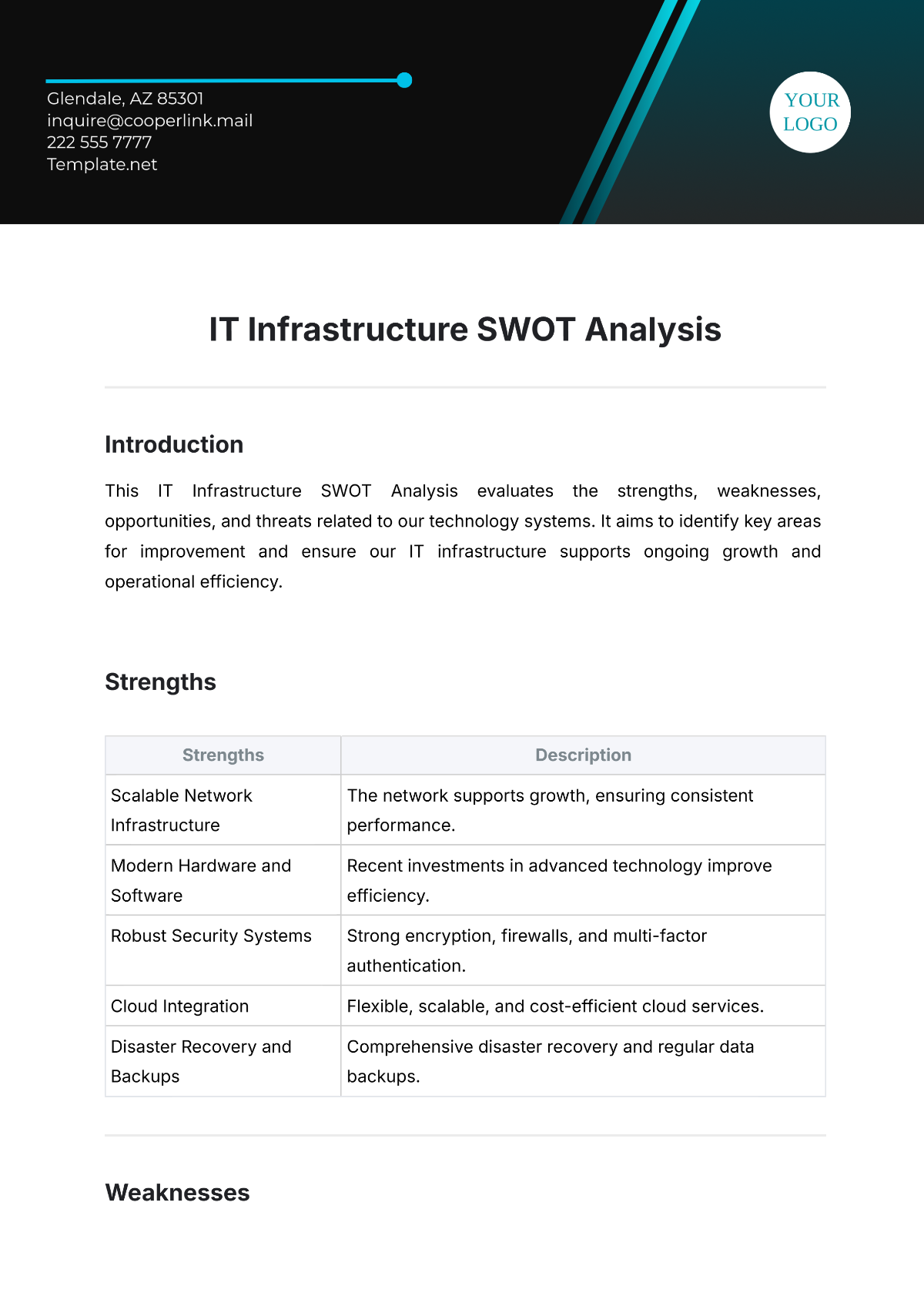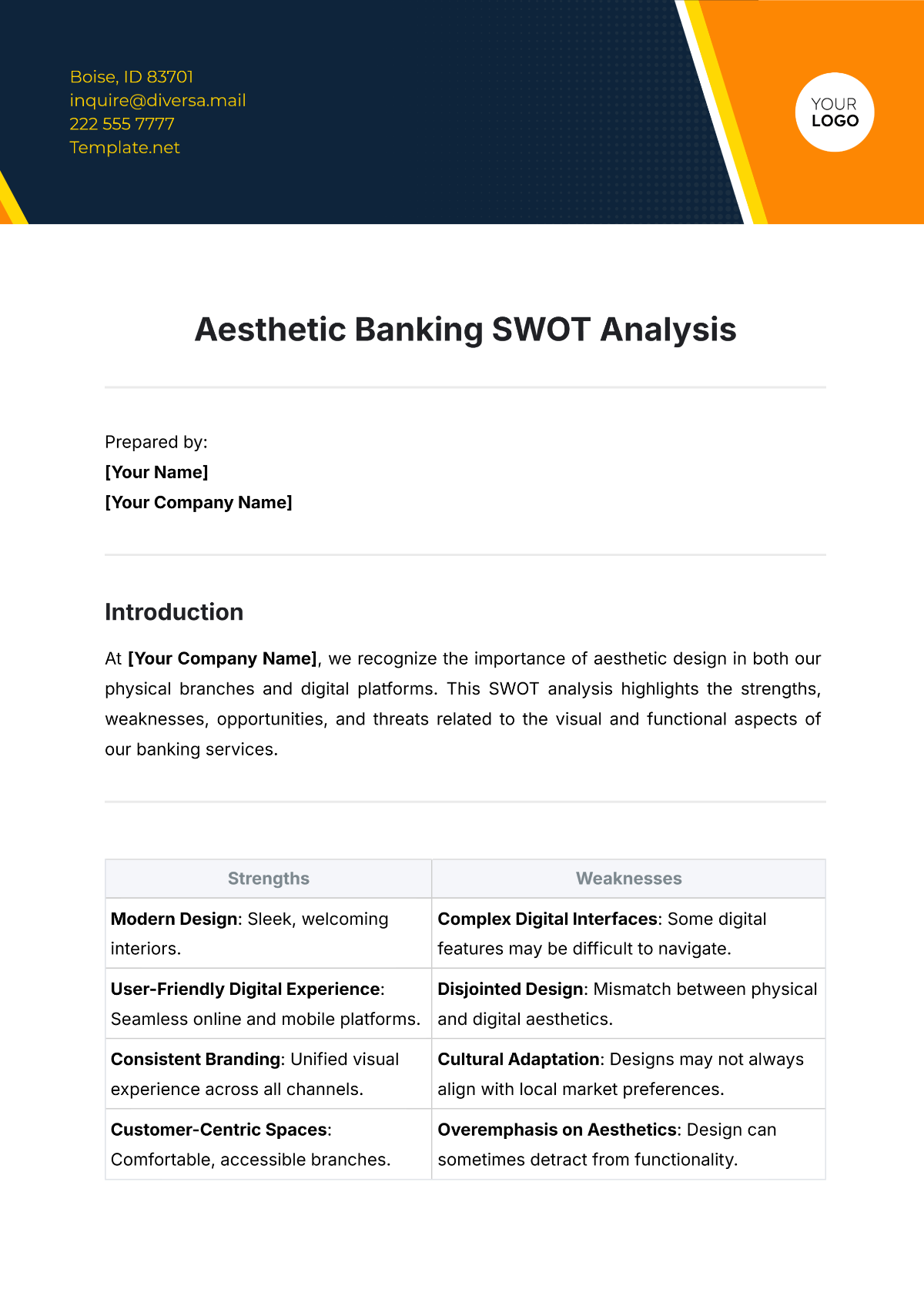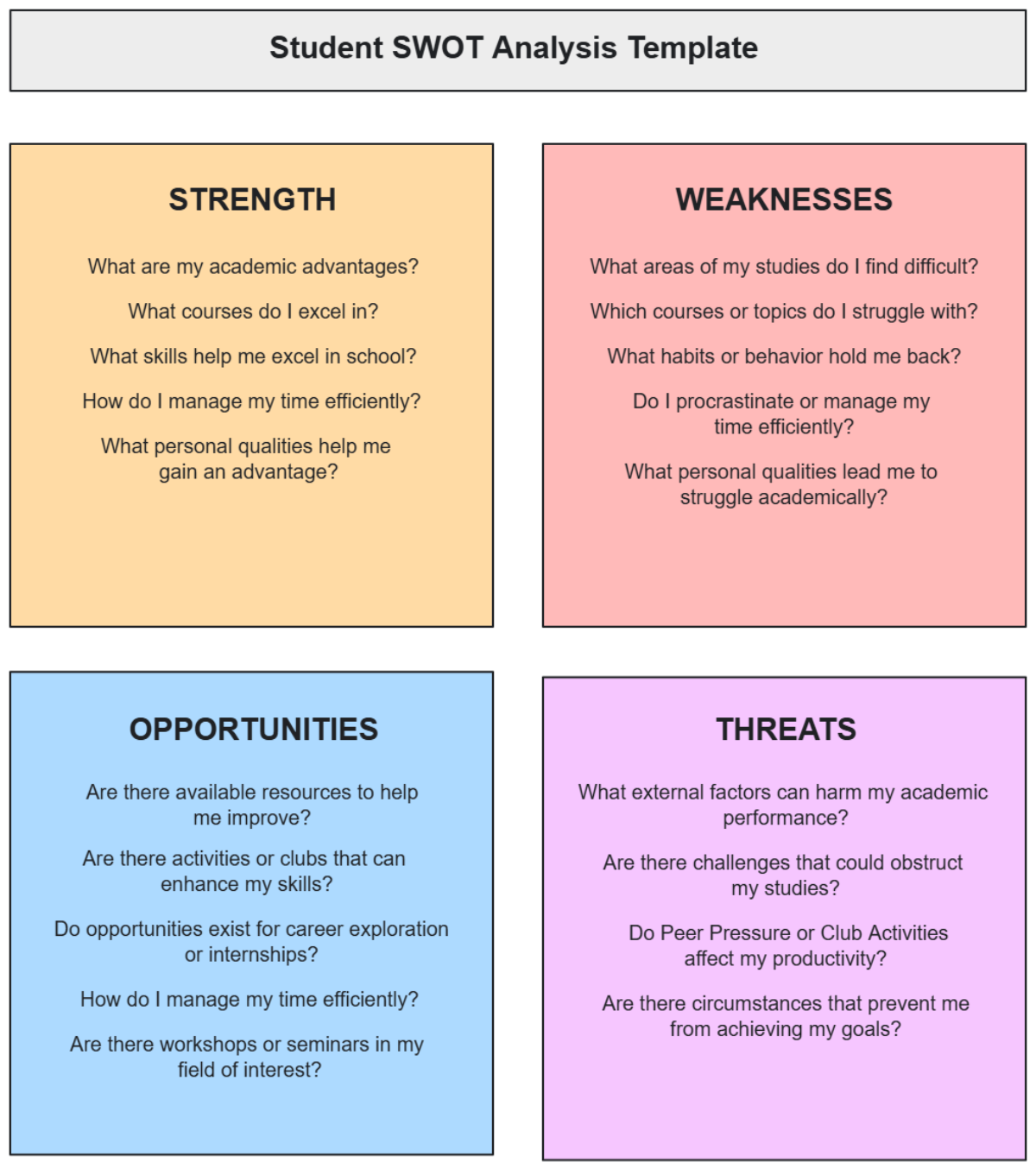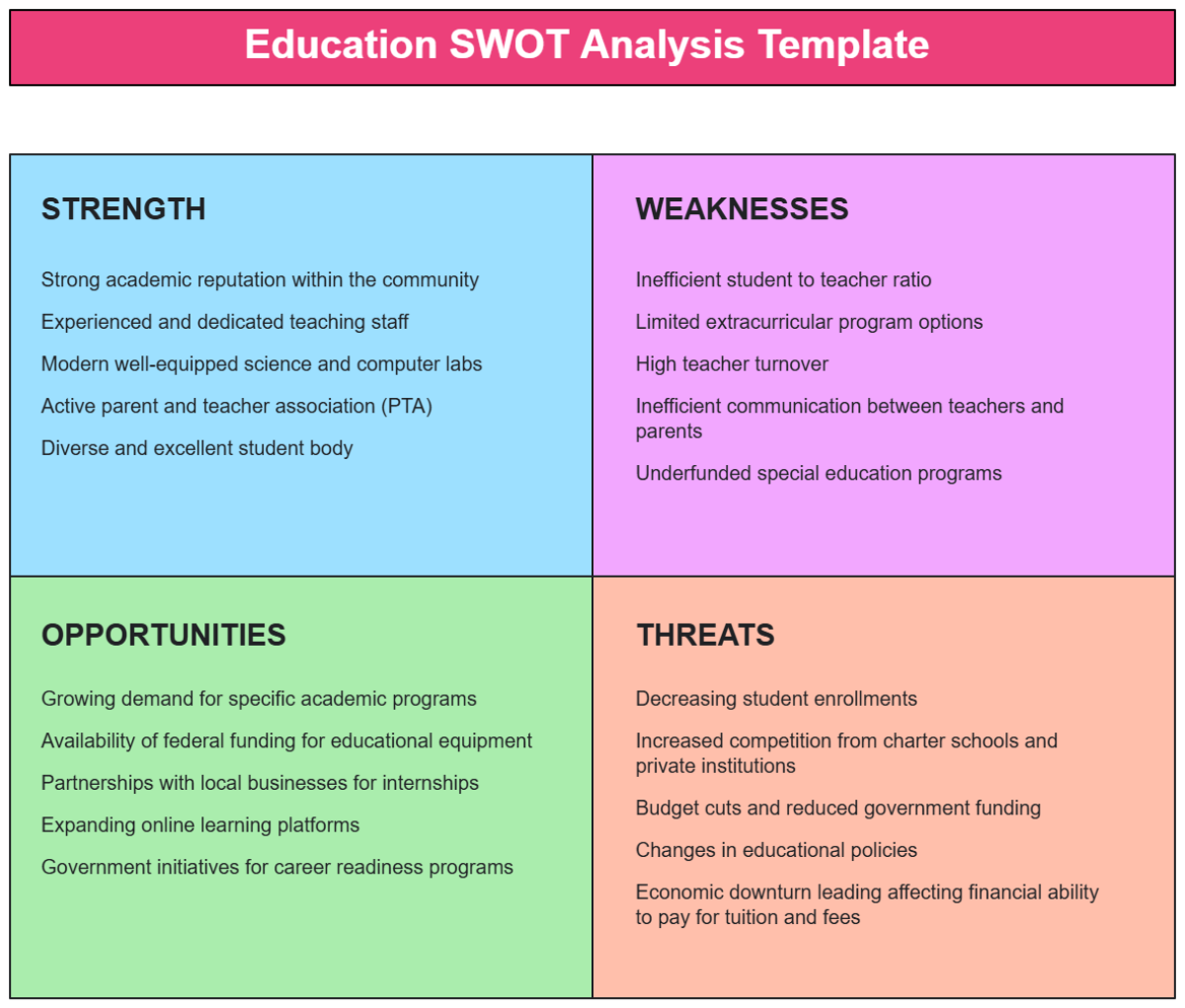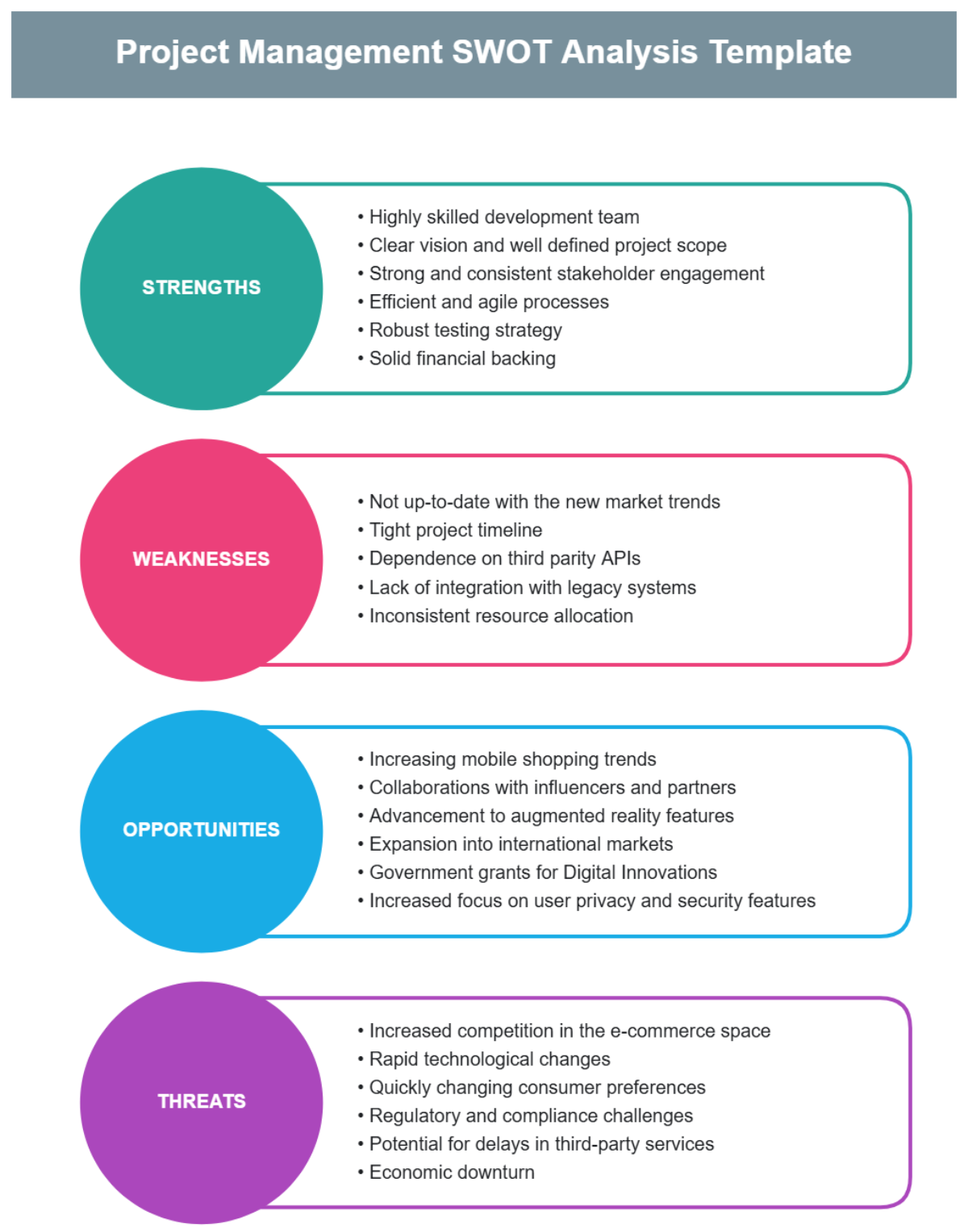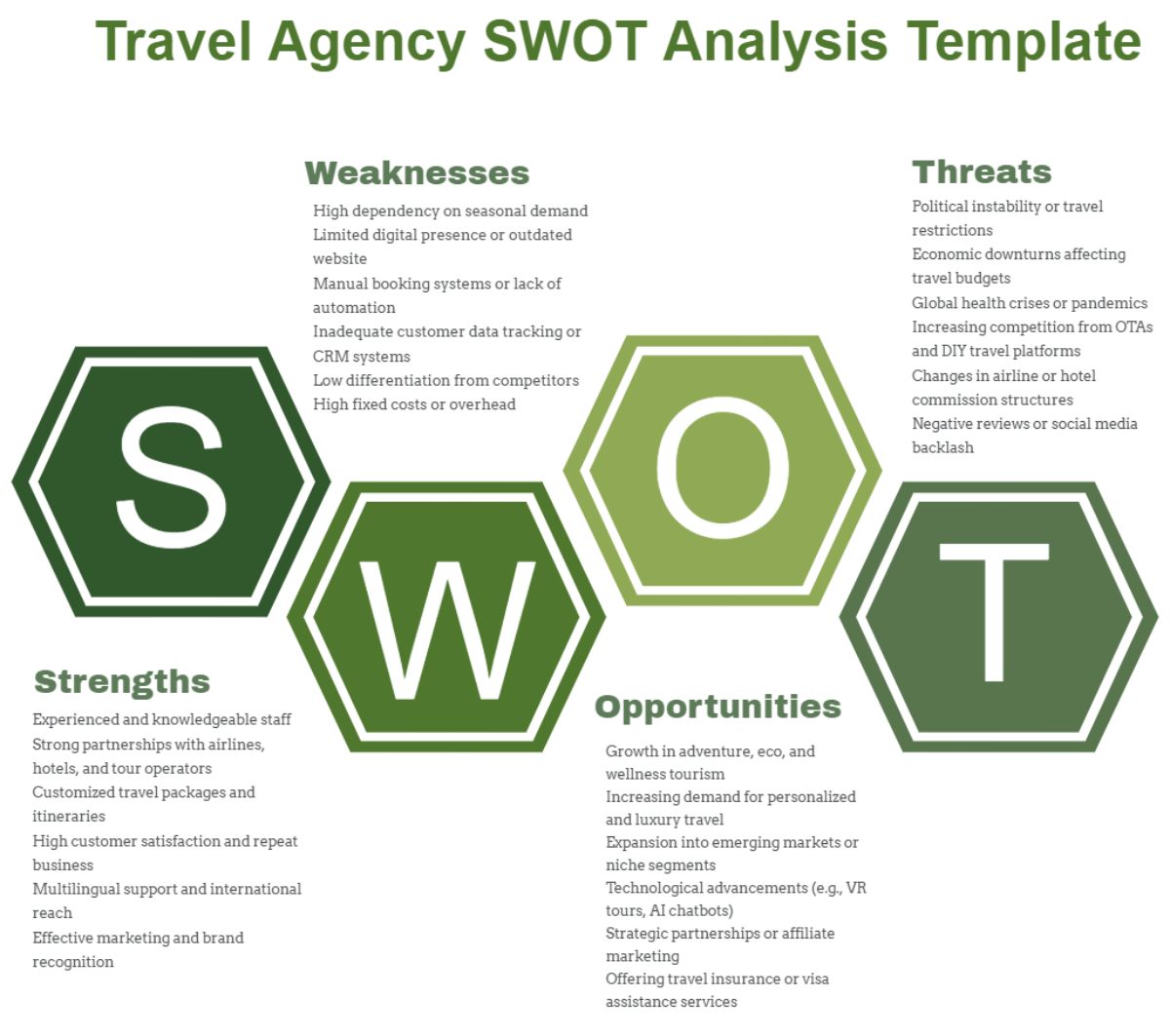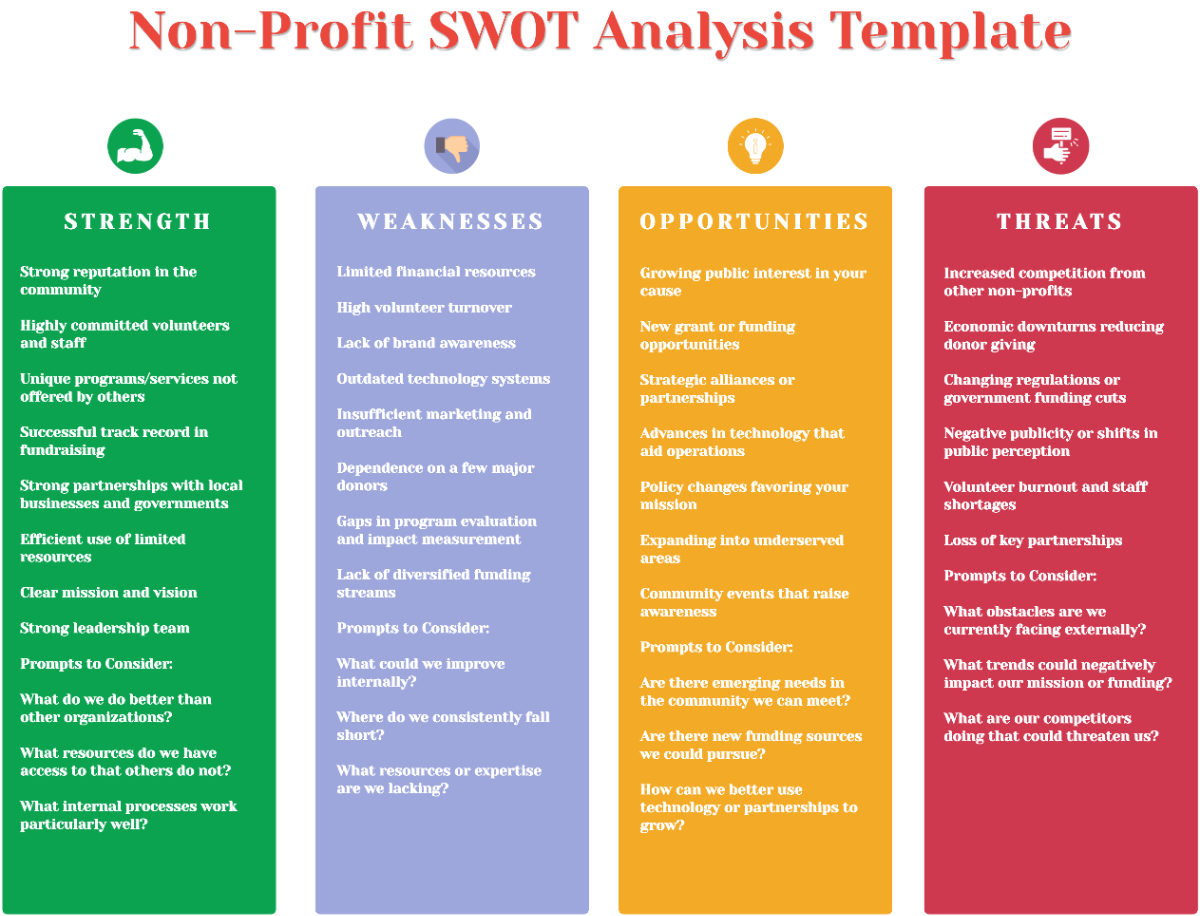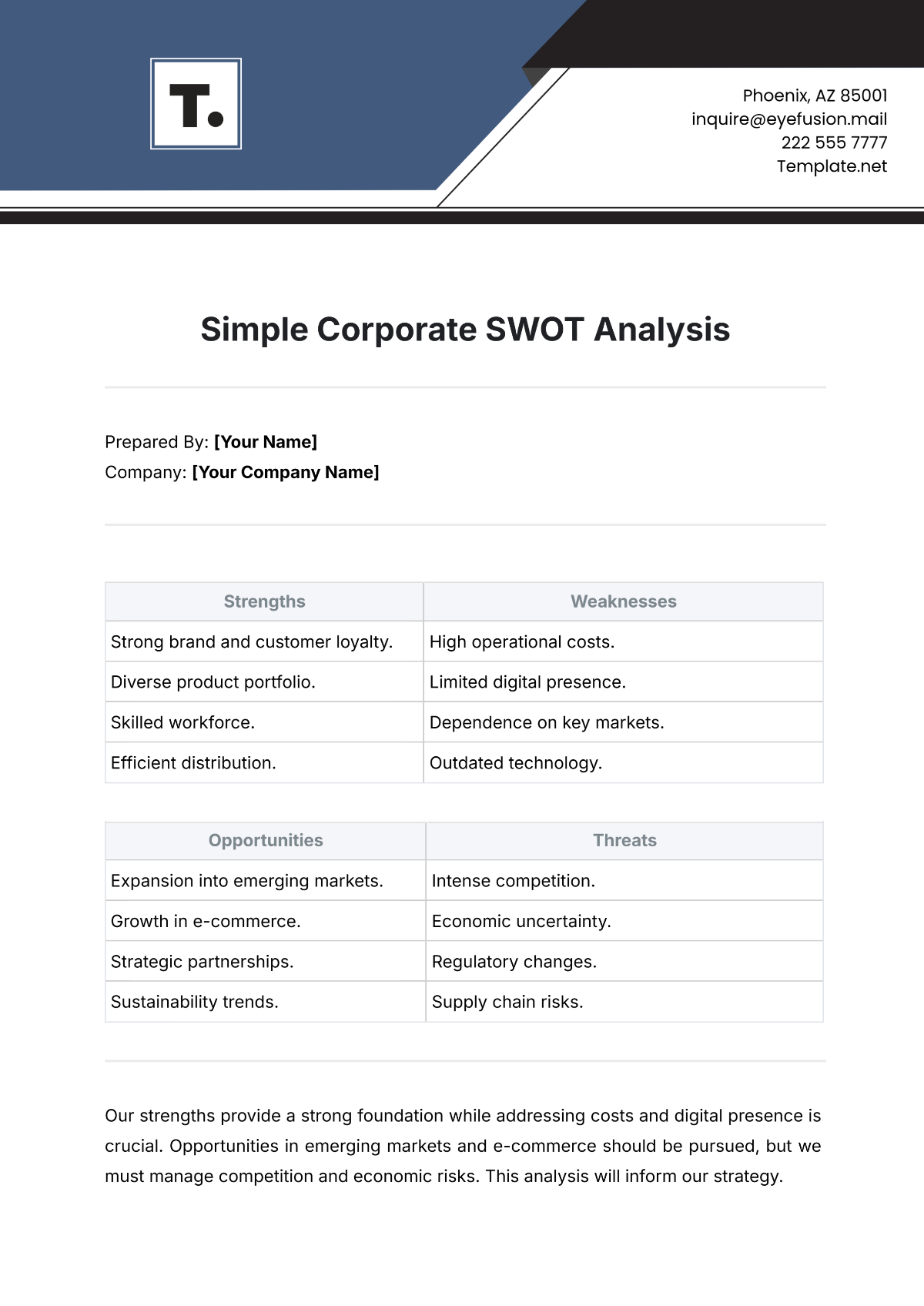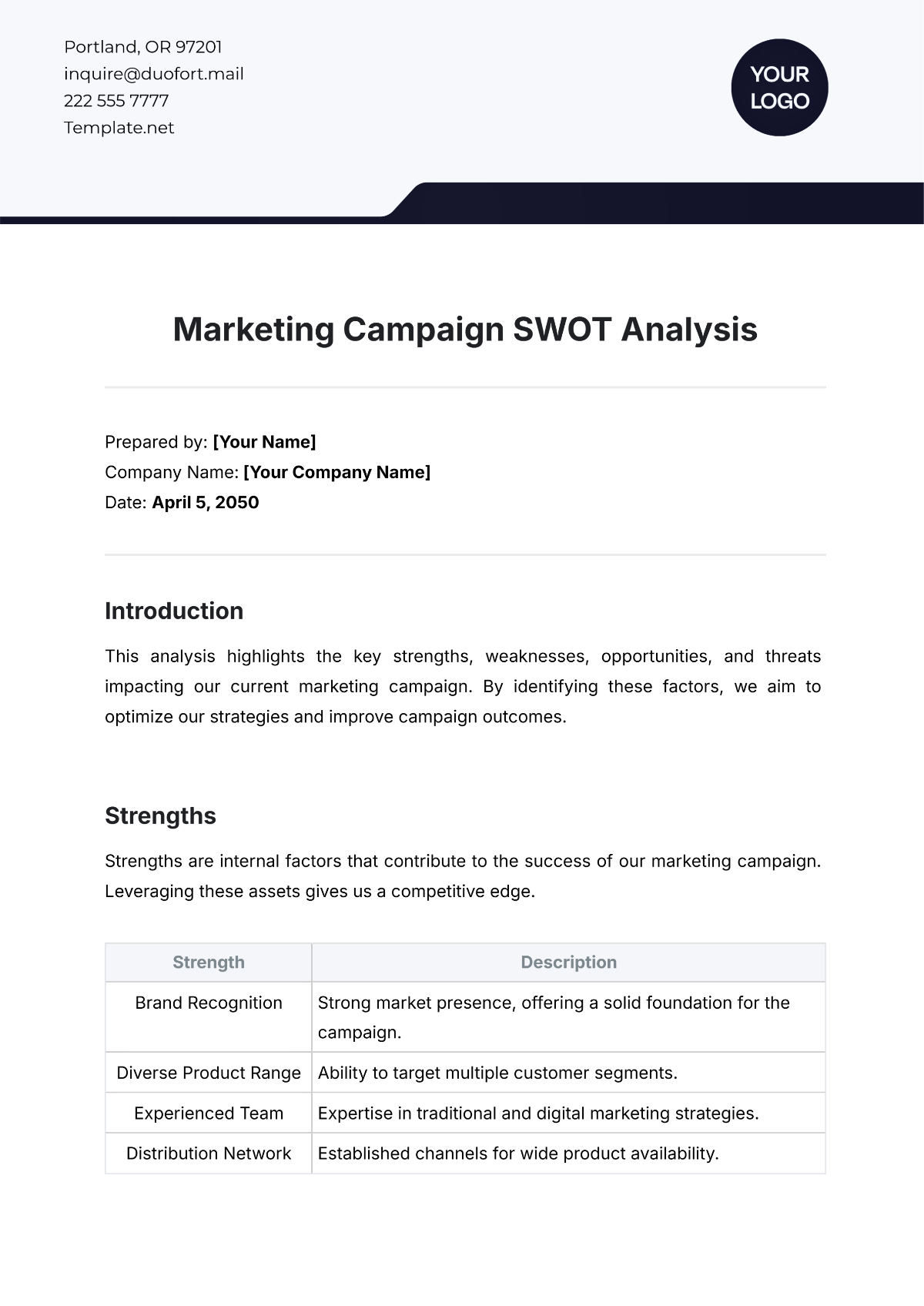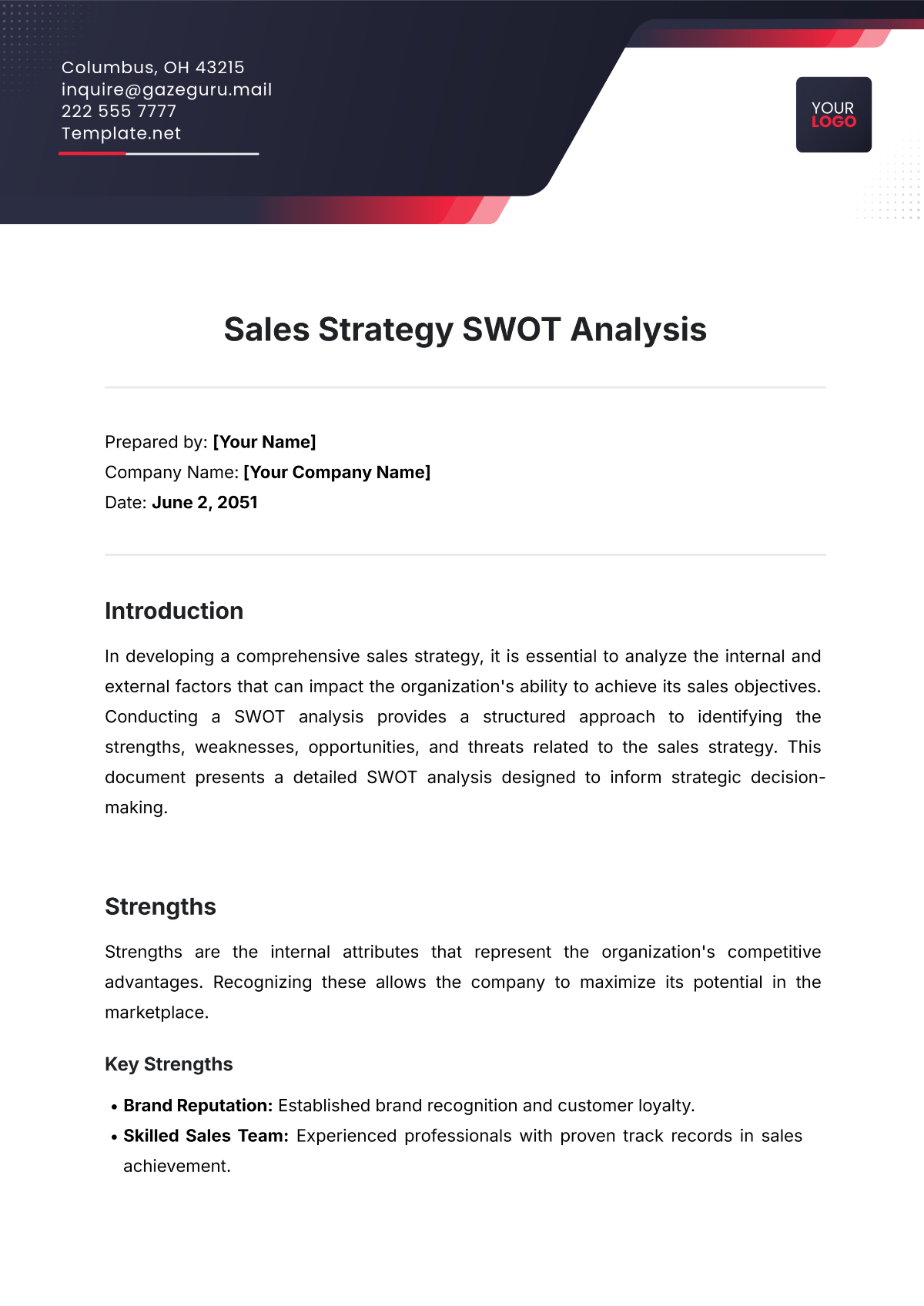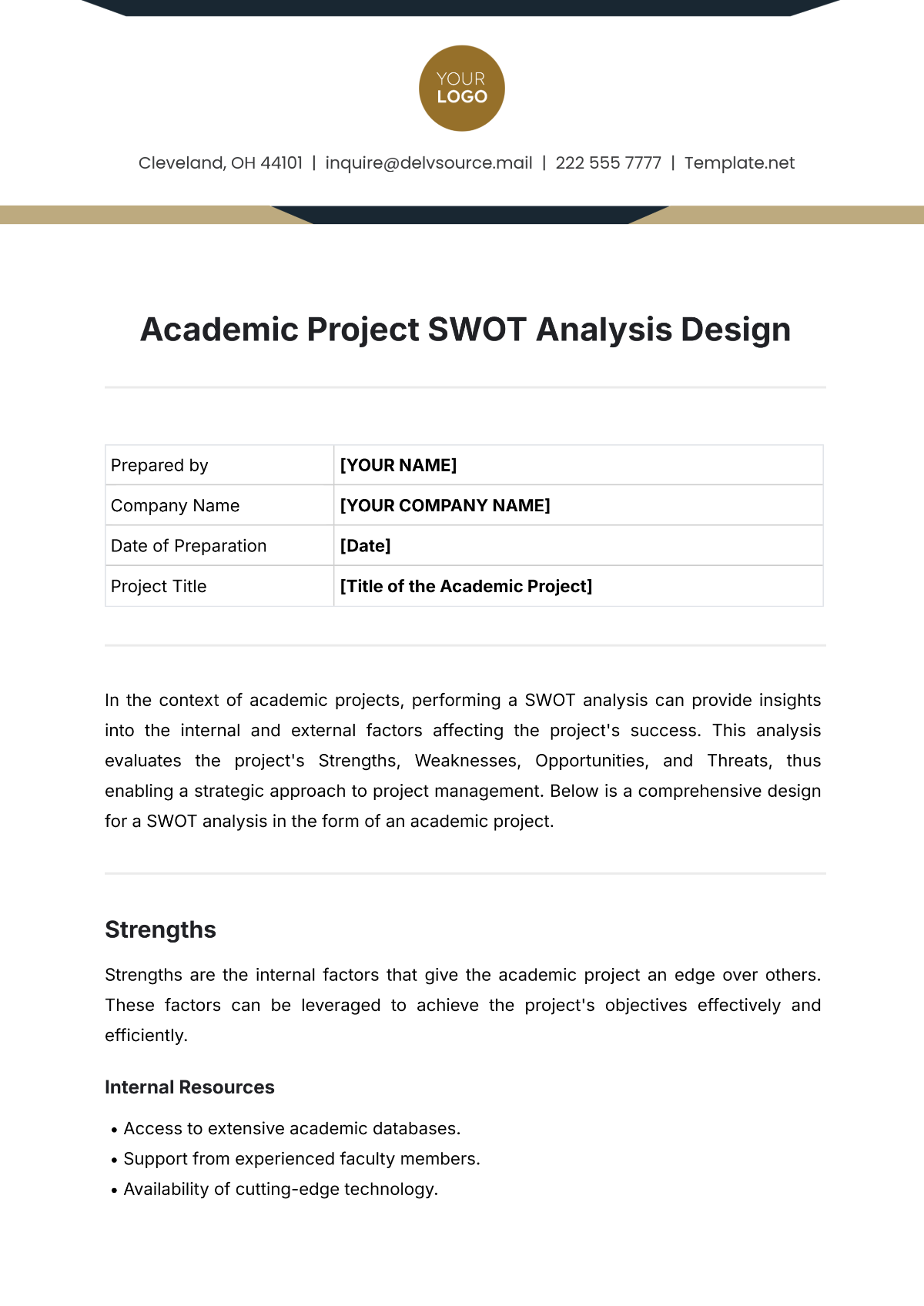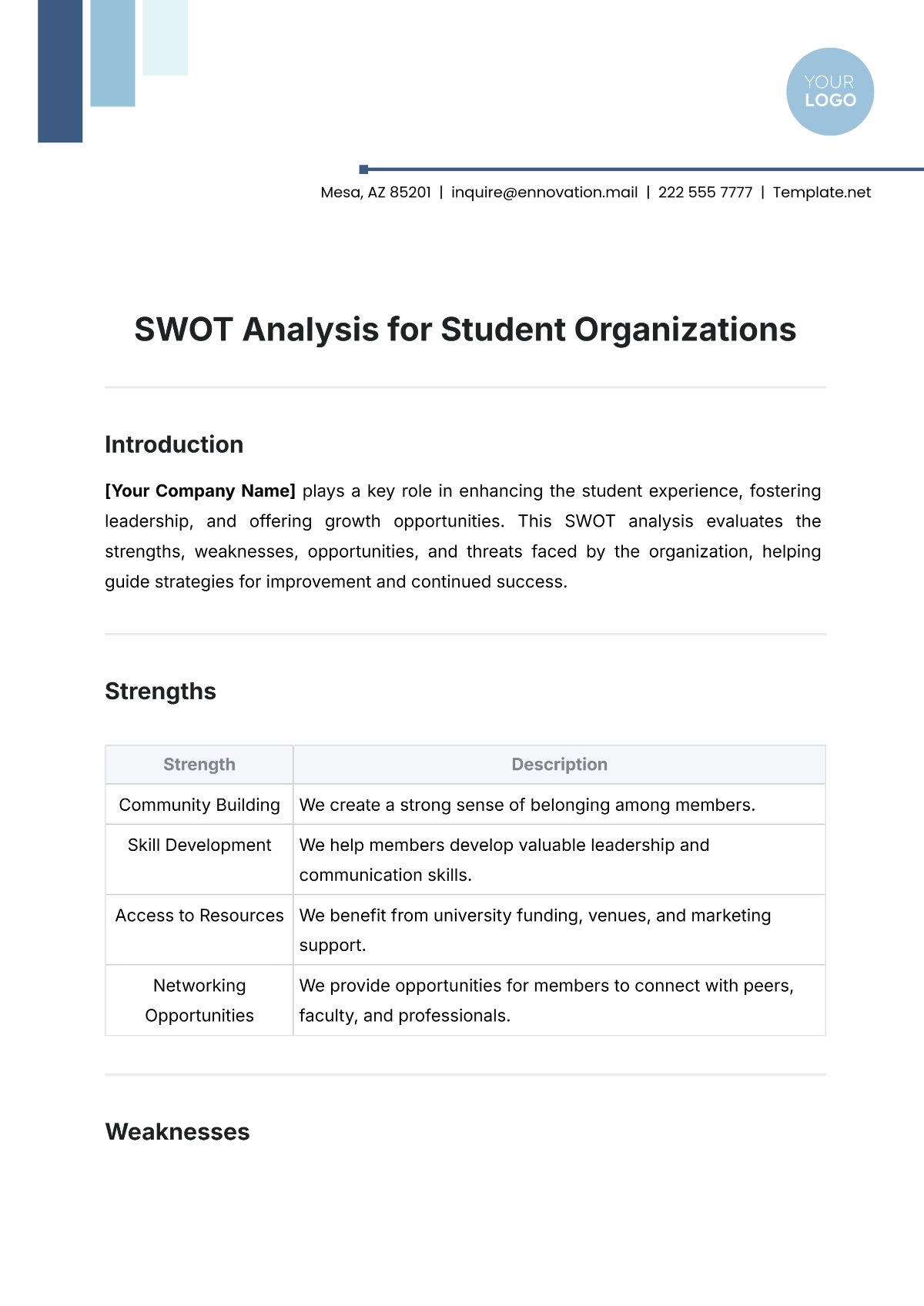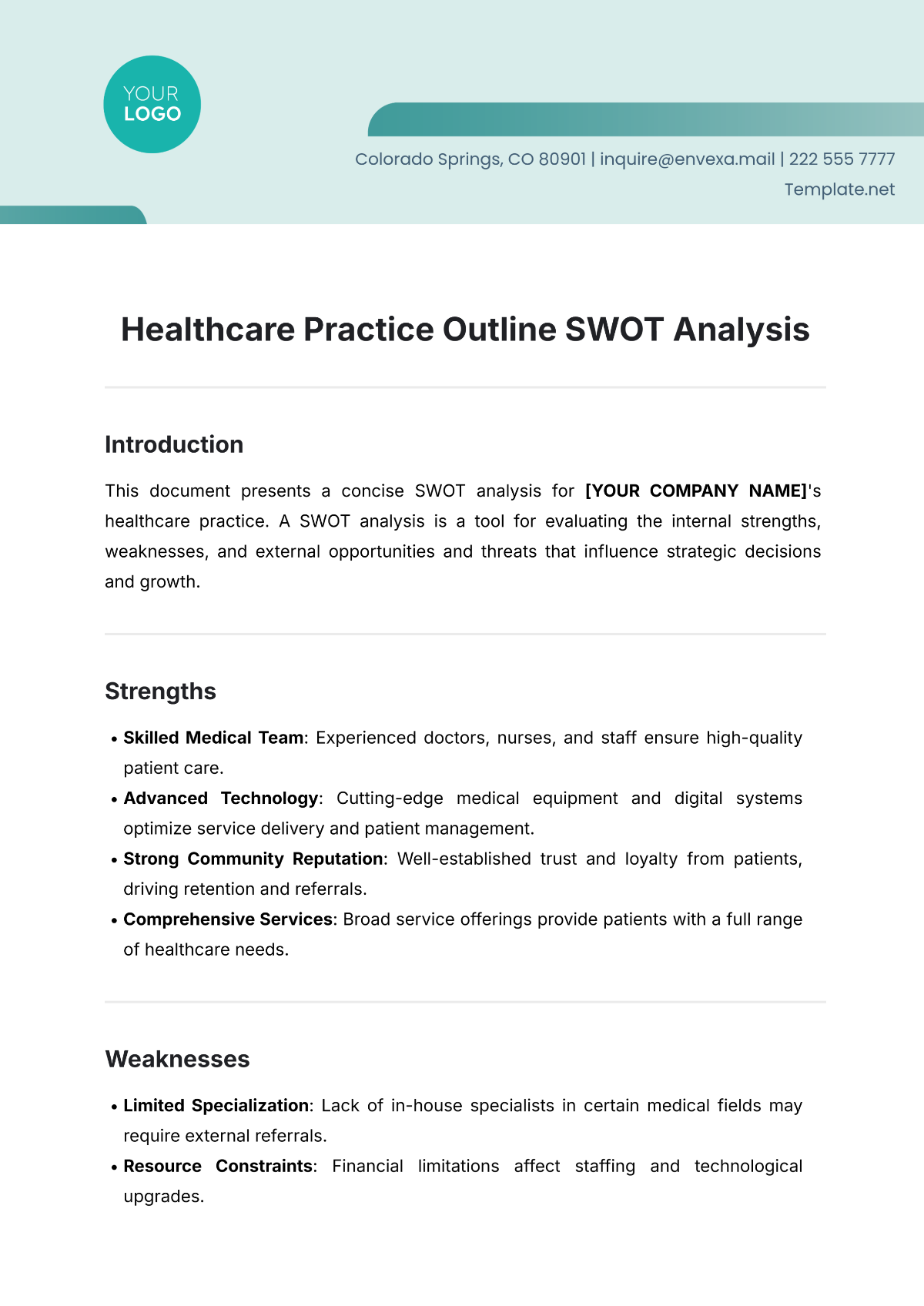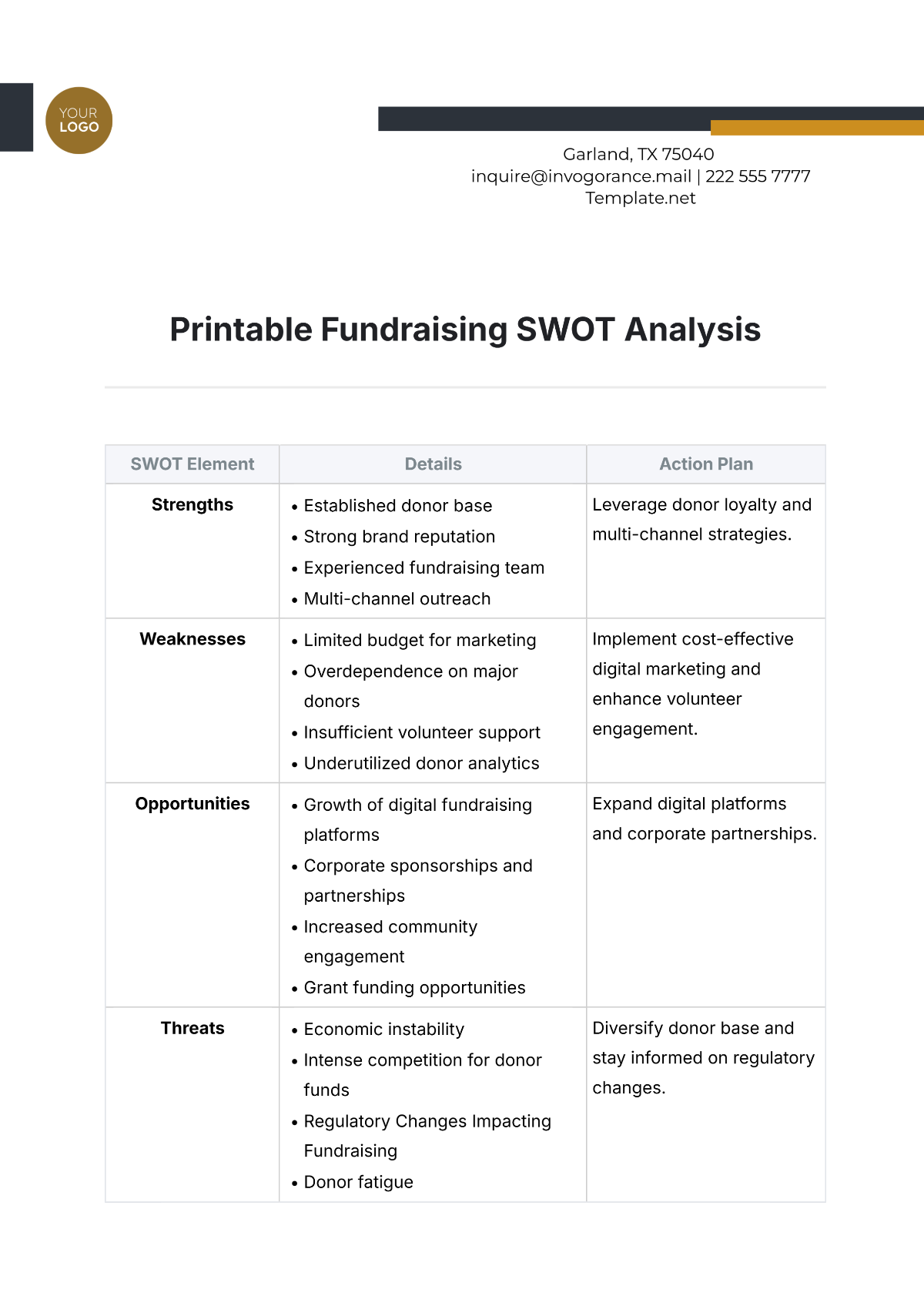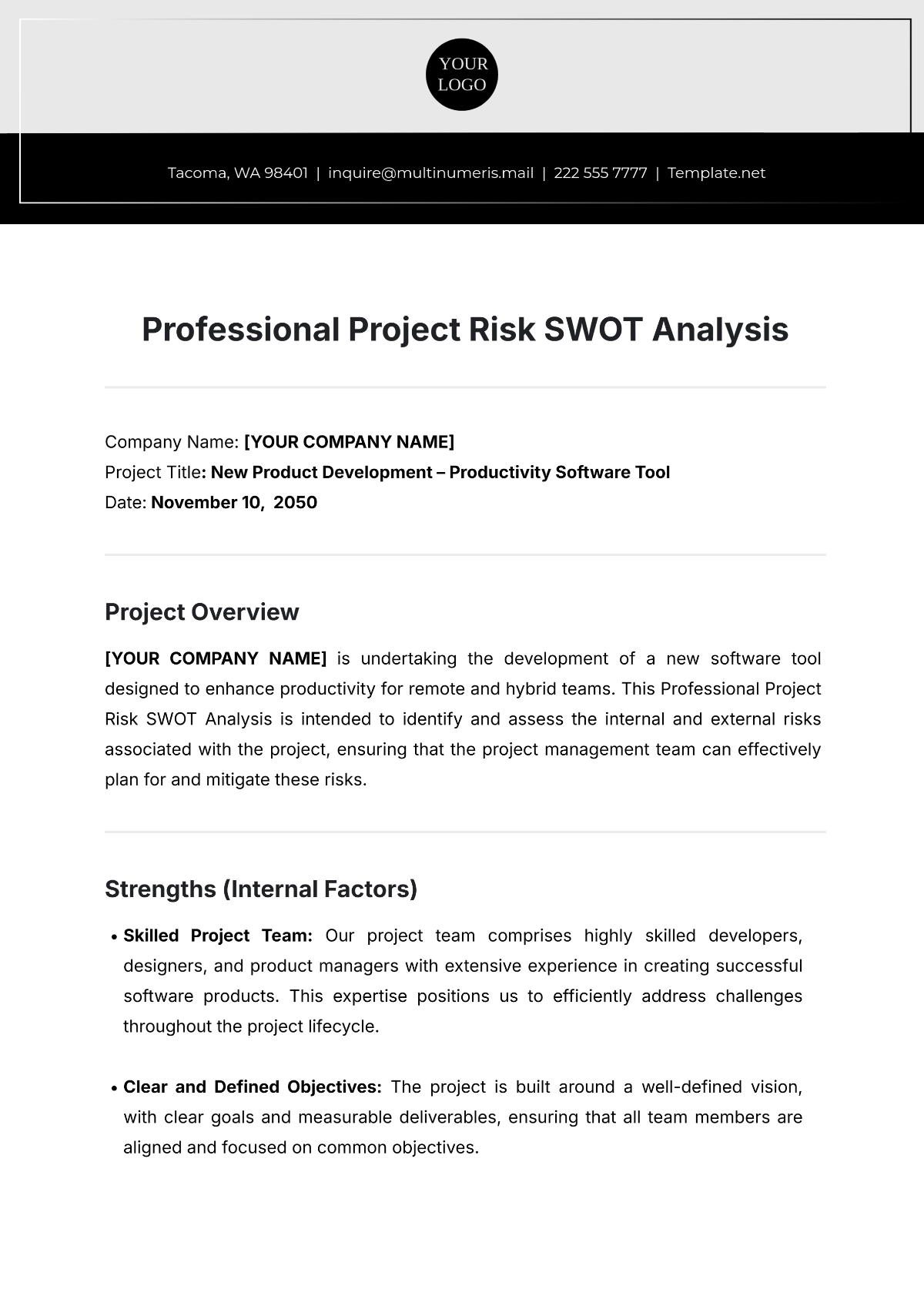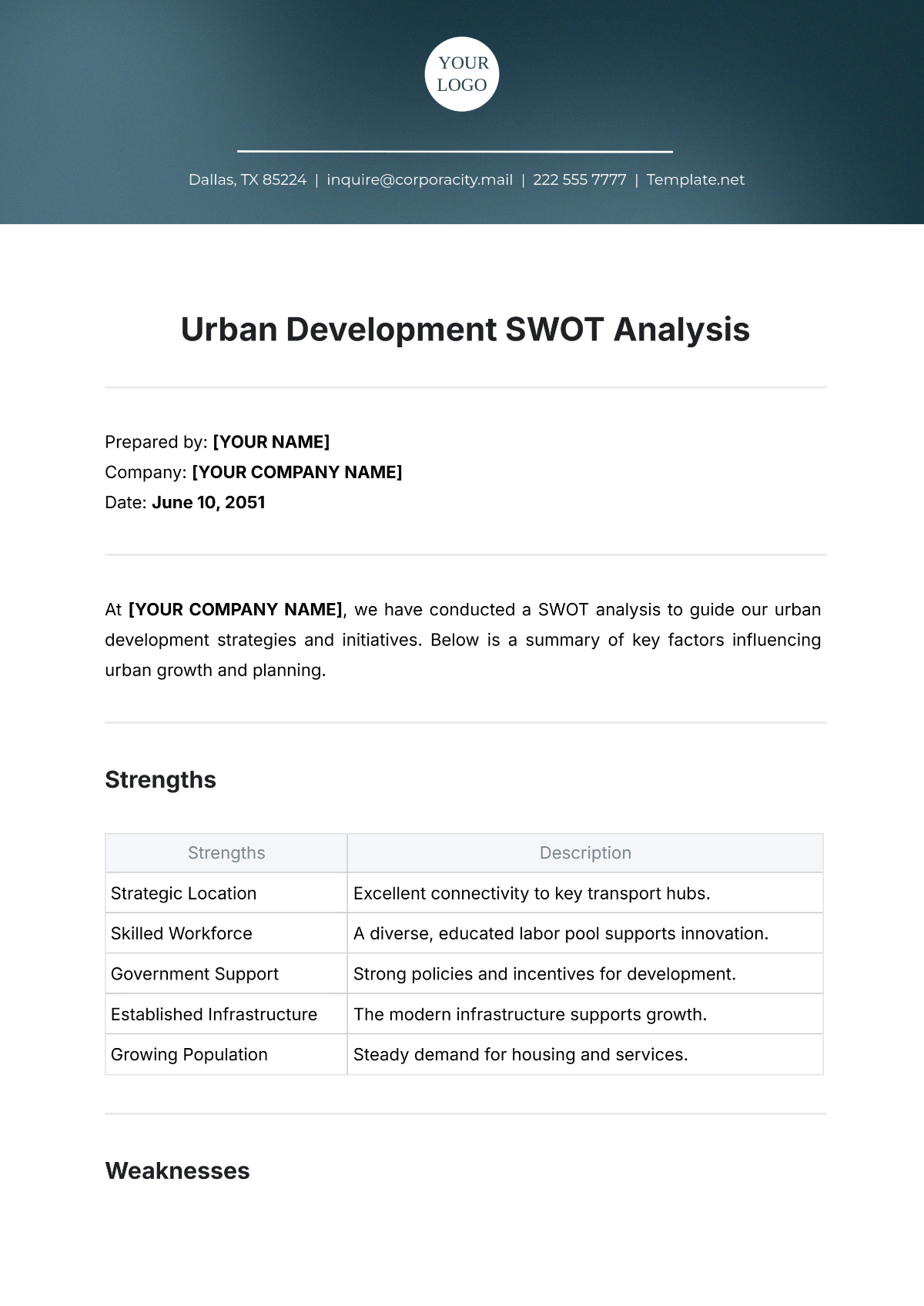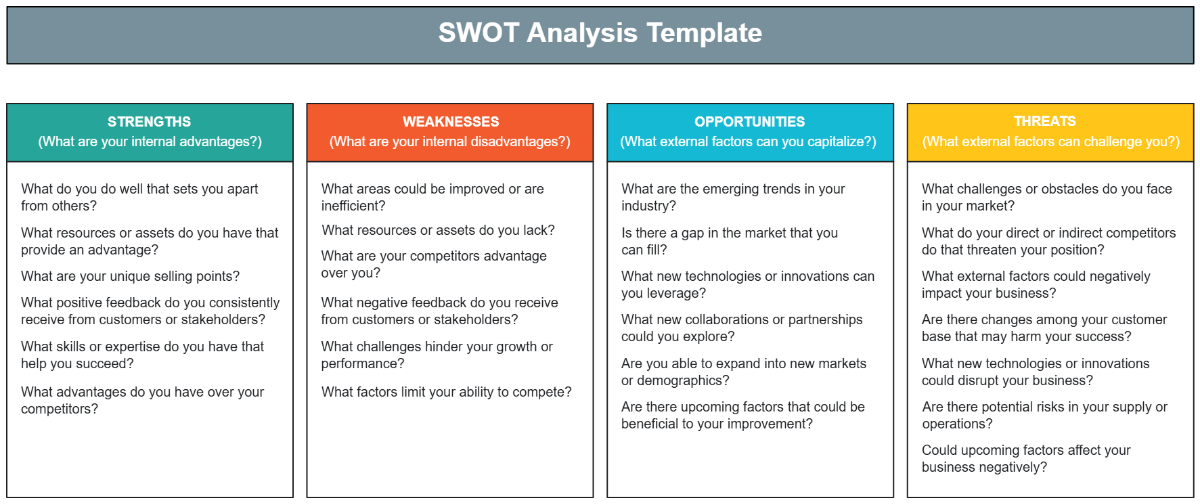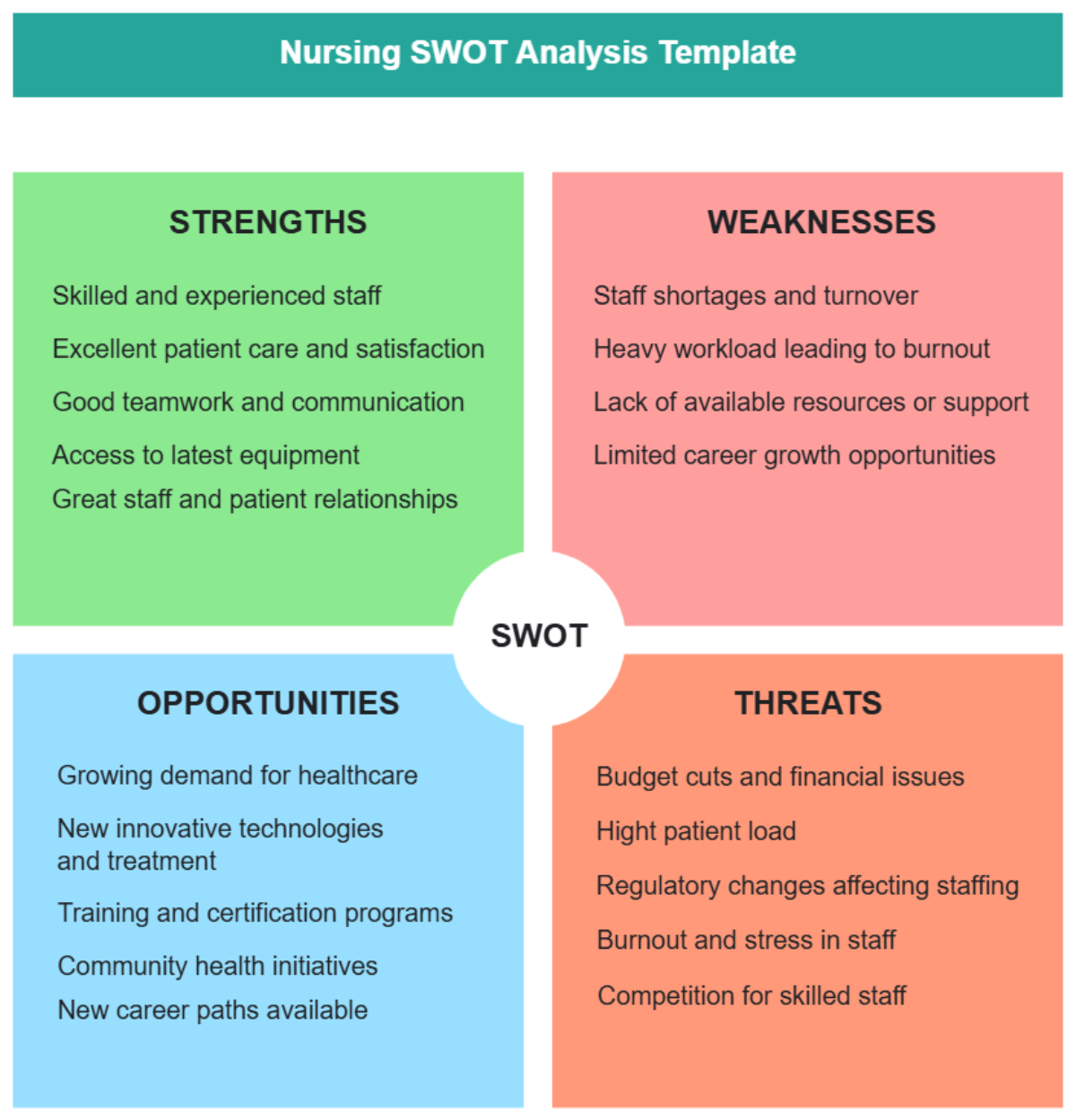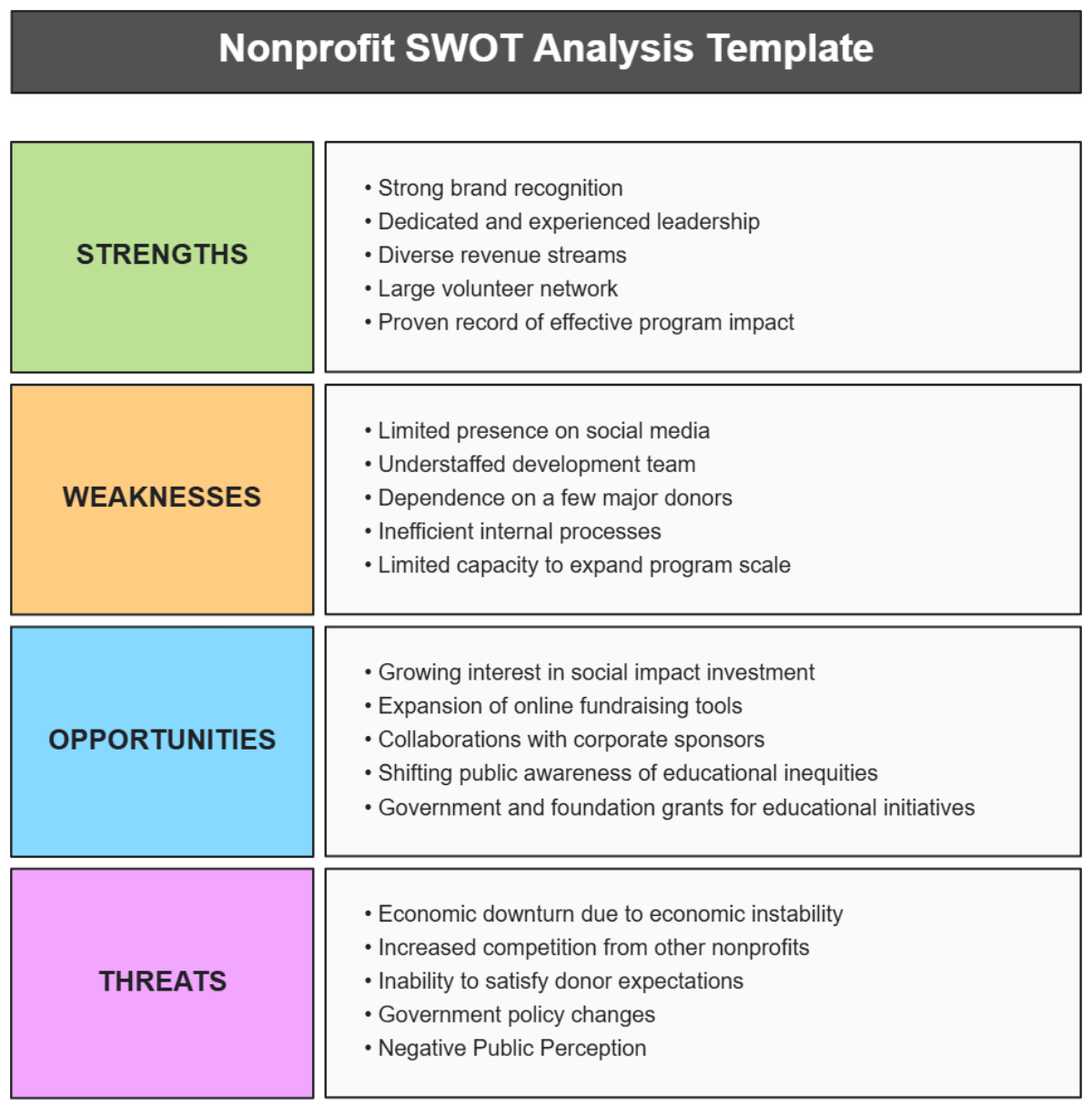Marketing Situation Analysis
Prepared By: | [YOUR NAME] |
Department: | [YOUR DEPARTMENT] |
Company: | [YOUR COMPANY NAME] |
I. Executive Summary
The Executive Summary succinctly encapsulates the primary findings and recommendations of the Marketing Situation Analysis. It outlines market growth trends, identifies key consumer demographics, and highlights competitive advantages and strategic opportunities for [Your Company Name]. The summary underscores the importance of leveraging these insights to refine marketing strategies and capitalize on emerging market dynamics for sustainable growth and competitiveness.
II. Market Overview
The Market Overview section presents a detailed understanding of current market dynamics, trends, and consumer behavior, laying the groundwork for strategic decision-making.
A. Market Dynamics
The market for renewable energy solutions has witnessed substantial growth since 2045, with a projected compound annual growth rate (CAGR) of 8.5% through 2055.
Evolving consumer preferences towards sustainable and ethically sourced products have significantly influenced market demand for clean energy alternatives.
Technological advancements in solar panel efficiency and battery storage solutions have reshaped market competition and product innovation strategies in the renewable energy sector.
B. Consumer Behavior
Target market segments for solar energy solutions encompass homeowners and commercial property owners, characterized by their interest in sustainability and cost savings.
Online platforms serve as primary channels for product research and purchase decisions, with 65% of consumers relying on social media for product recommendations.
Trends such as increased environmental awareness and government incentives for renewable energy adoption are driving consumer preferences toward solar panels and energy-efficient appliances.
C. Market Overview Statistics
Market Size (USD) | Growth Rate (%) | Key Trends |
|---|---|---|
$350 Billion | 10% | Sustainable products, |
Ethical sourcing practices |
III. Competitor Analysis
The Competitor Analysis provides insights into the strengths, weaknesses, opportunities, and threats posed by key competitors within the industry landscape.
A. Competitor Profiles
Major competitors in the renewable energy industry include [Competitor 1], [Competitor 2], and [Competitor 3], with market shares of 25%, 30%, and 20%, respectively.
[Competitor 1] excels in solar panel technology and installation services, leveraging a diverse product portfolio to capture market share across residential and commercial sectors.
[Competitor 2] focuses on sustainability initiatives and community engagement, emphasizing customer service and brand loyalty to maintain its competitive edge.
[Competitor 3] has a strong online presence and utilizes data analytics for targeted marketing strategies, enabling personalized customer interactions and efficient lead generation.
B. Competitor Comparison
Competitor | Market Share (%) | Main Strategy |
|---|---|---|
Competitor 1 | 24.5% | Diverse product portfolio |
Competitor 2 | 32.7% | Customer service, brand |
loyalty | ||
Competitor 3 | 18.7% | Online presence, data |
analytics |
C. Comparative Analysis
A comprehensive SWOT analysis comparing [Competitor 1] with key competitors reveals [Competitor 1]'s strengths in patented solar panel technology and extensive distribution network while highlighting weaknesses in limited brand recognition and reliance on third-party suppliers.
Opportunities for [Competitor 1] include expanding into emerging markets in developing countries and diversifying product offerings to include integrated smart home solutions, whereas threats stem from aggressive competition from established players and regulatory uncertainties in government incentives for renewable energy adoption.
D. SWOT Analysis
Strengths | Weaknesses | Opportunities | Threats |
|---|---|---|---|
Strong brand recognition | Limited product differentiation | Emerging market opportunities | Intense competition |
Innovative product offerings | Reliance on external suppliers | Technological advancements | Economic downturn |
IV. Recommendations
Based on the analysis findings, the Recommendations section outlines actionable strategies and tactics to capitalize on strengths, address weaknesses, and leverage opportunities while mitigating threats.
Strengthen product differentiation efforts through innovative design features and customization options, focusing on enhancing user experience and functionality.
Diversify supplier relationships to mitigate supply chain risks and enhance product availability by sourcing from multiple reliable vendors and exploring strategic partnerships for strategic inventory management.
Implement targeted digital marketing campaigns to engage with millennial homeowners and environmentally-conscious consumers, leveraging social media platforms and influencer collaborations to amplify brand awareness and foster community engagement.
V. Conclusion
In conclusion, the Marketing Situation Analysis provides valuable insights into the current market landscape, competitive dynamics, and strategic opportunities for [Your Company Name]. By leveraging the findings and recommendations outlined in this analysis, [Your Company Name] can navigate market complexities and pursue sustainable growth and success.
